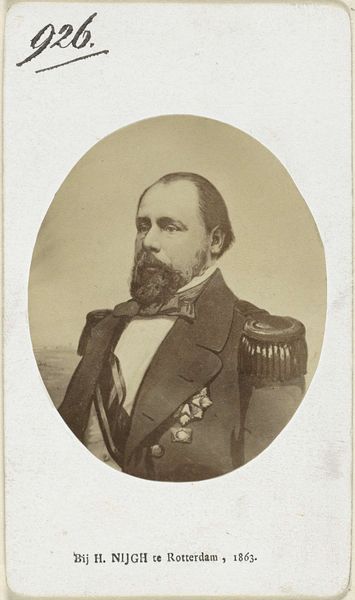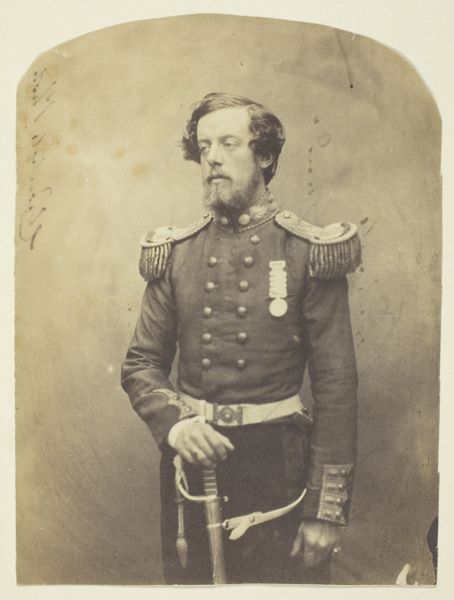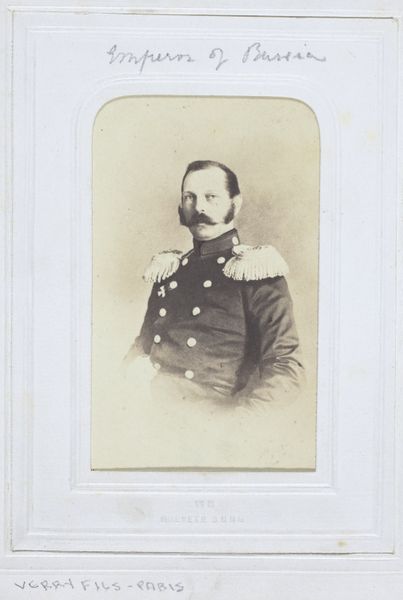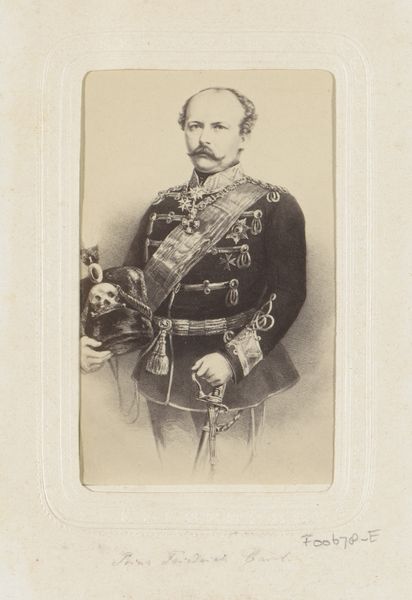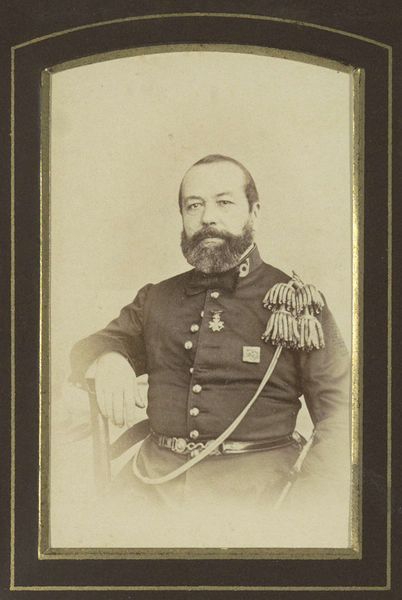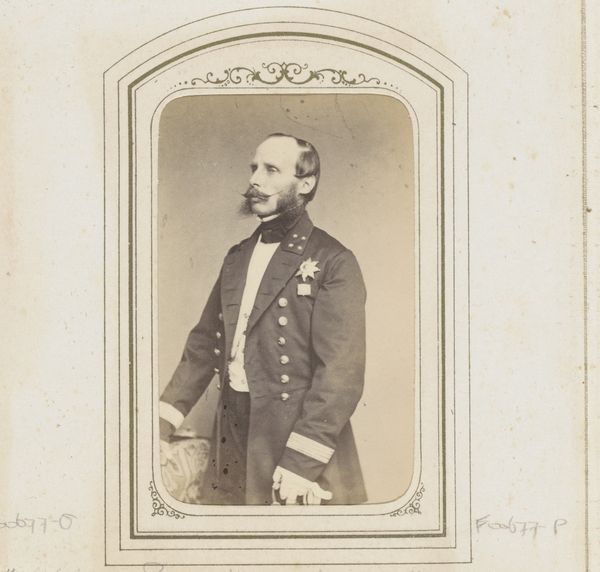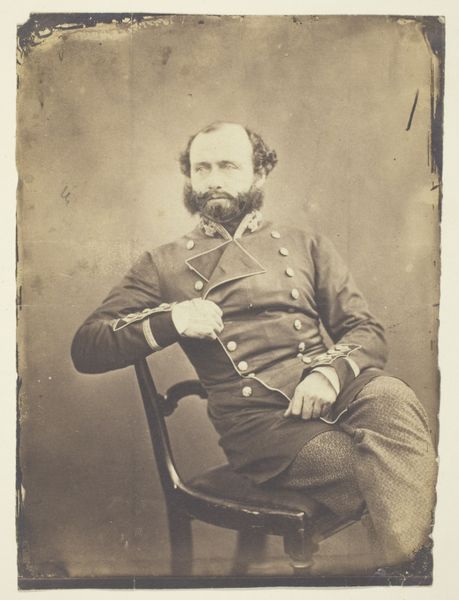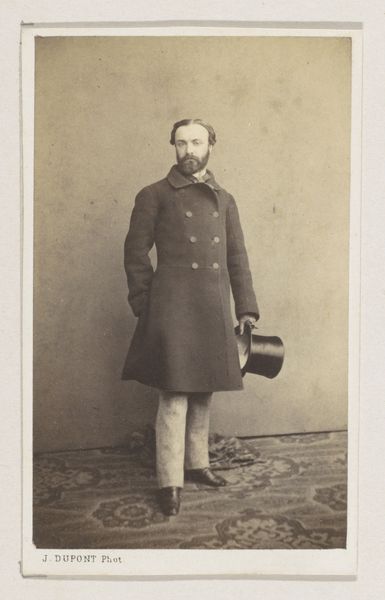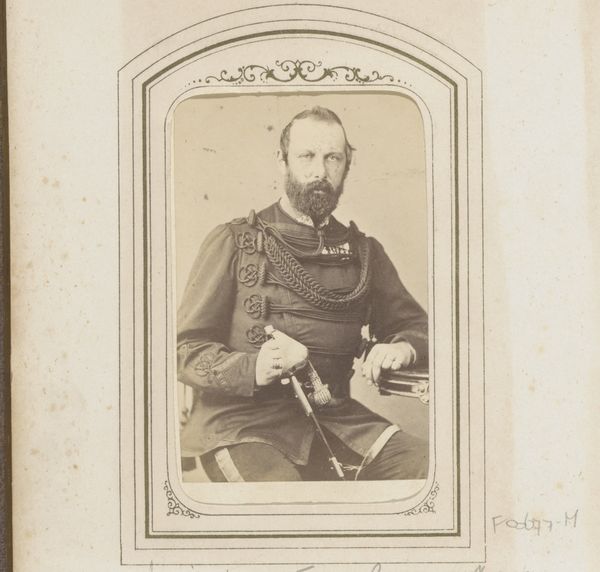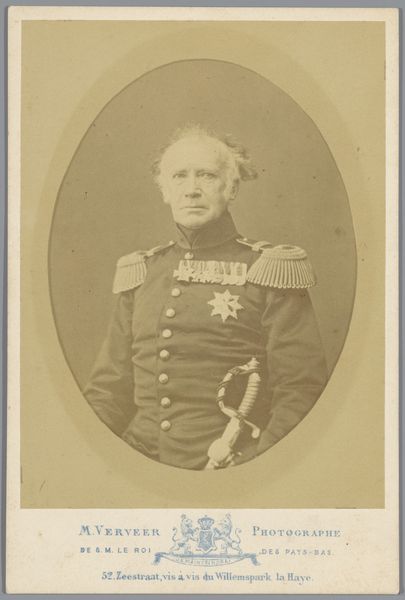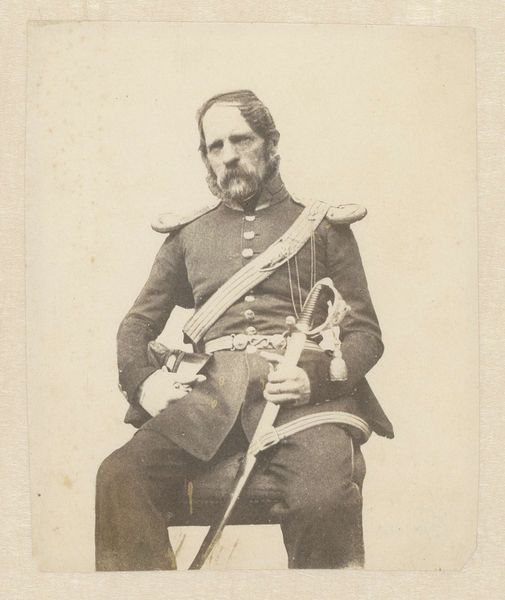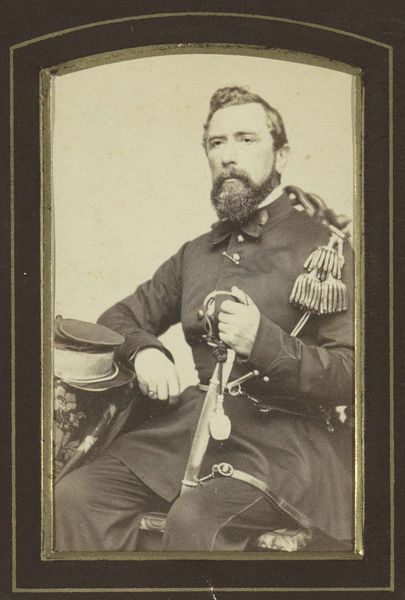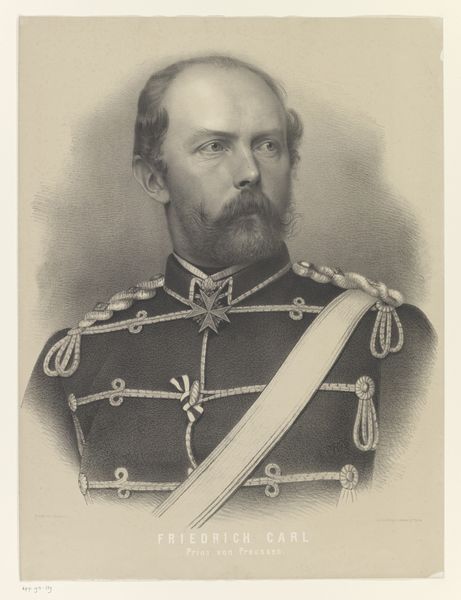
print, photography, gelatin-silver-print
#
portrait
#
16_19th-century
# print
#
war
#
photography
#
gelatin-silver-print
#
history-painting
#
realism
Dimensions: 17.2 × 13 cm (image/paper); 26 × 22.3 cm (mount)
Copyright: Public Domain
Editor: This is Roger Fenton's photograph, "Robert Brownrigg, taken at the Crimea," from 1855, a gelatin-silver print. There's a formal stillness to it, but I can’t help but wonder about the realities of war that Brownrigg experienced just before this image was captured. What stands out to you about this portrait? Curator: I find it fascinating how Fenton positions Brownrigg within a very specific socio-political context. The Crimean War, though distant for us now, was a significant moment of imperial contest and social upheaval. This portrait, in its carefully constructed formality, seems to simultaneously uphold and question Victorian ideals of heroism. Editor: Question? In what way? He seems quite stately, very proper, almost like a classical bust. Curator: Exactly! But let's consider the realities of war versus the polished image presented here. Photography, still in its relative infancy, was used to document the conflict, but also to shape public opinion. Fenton, through portraits like this, walks a tightrope, attempting to glorify the military enterprise, yet inevitably revealing the individual caught within it. Can you sense a tension between the propagandistic aim and the very human subject in front of the camera? Editor: I see what you mean. There's a vulnerability in his eyes that contrasts with the military attire. It makes you consider the individual experience within that historical context. Curator: Precisely. It’s through analyzing these visual and historical tensions that we begin to understand the multifaceted role of art – and especially photography - in shaping and reflecting our understanding of conflict, power, and identity. This one image becomes a microcosm of larger societal anxieties and beliefs. Editor: I'm definitely seeing more layers now than I did at first glance. It’s more complex than just a historical portrait; it’s a carefully constructed narrative reflecting a very specific cultural moment.
Comments
No comments
Be the first to comment and join the conversation on the ultimate creative platform.
